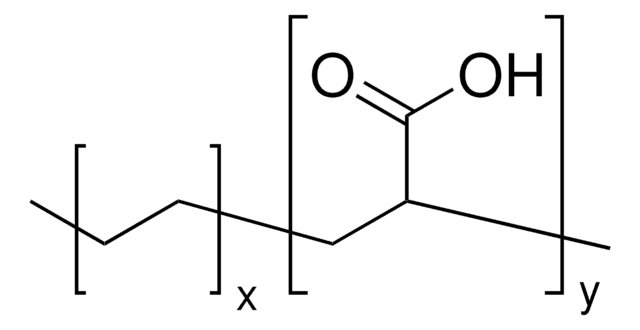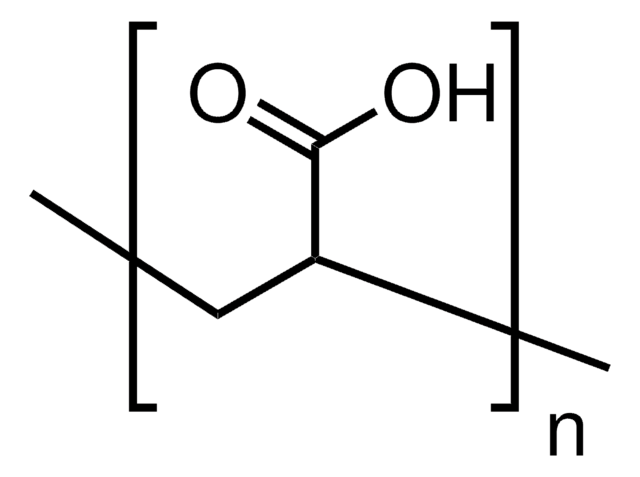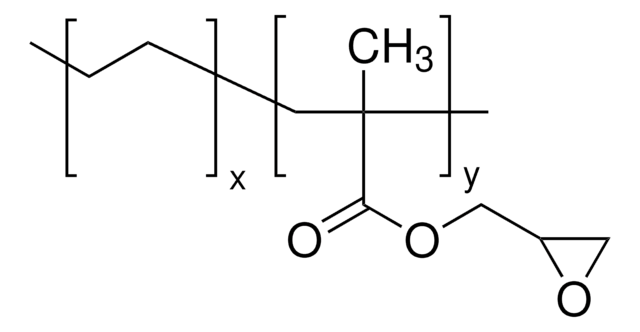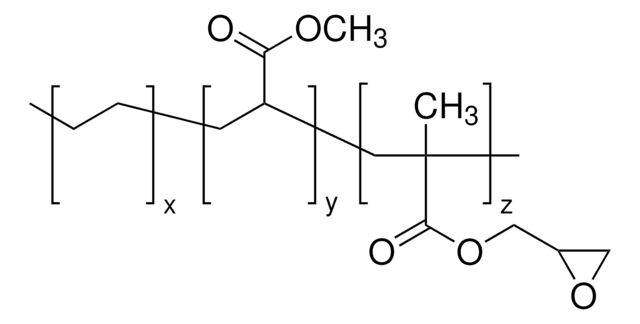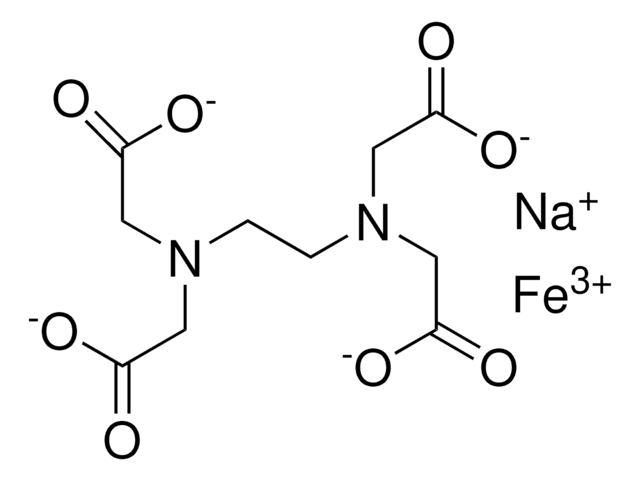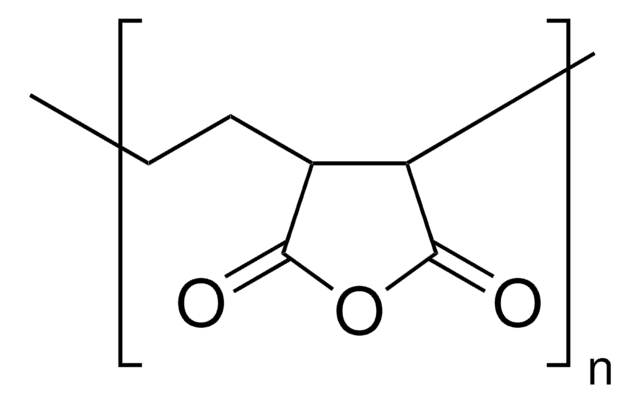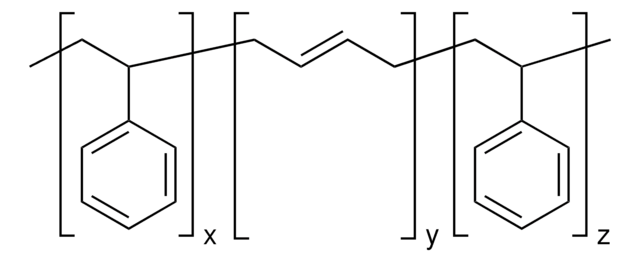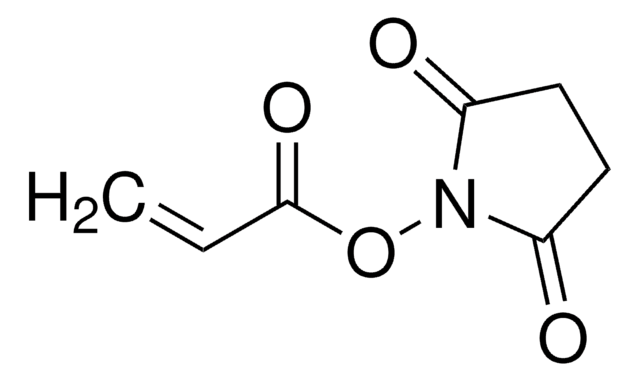448672
Poly(ethylene-co-acrylic acid)
acrylic acid 15 wt. %
Se connecterpour consulter vos tarifs contractuels et ceux de votre entreprise/organisme
About This Item
Formule linéaire :
(CH2CH2)x[CH2CH(CO2H)]y
Numéro CAS:
Numéro MDL:
Code UNSPSC :
12162002
ID de substance PubChem :
Nomenclature NACRES :
NA.23
Produits recommandés
Composition
acrylic acid, 15 wt. %
Dureté
≤15 dmm (ASTM D 5, 25 °C)
Viscosité
600 cP(140 °C, Brookfield)(lit.)
Indice d'acide
112‑130 mg KOH/g
Température de transition
Tm (DSC) 87 °C (at peak)
Densité
0.93 g/mL at 25 °C
Chaîne SMILES
C=C.OC(=O)C=C
InChI
1S/C3H4O2.C2H4/c1-2-3(4)5;1-2/h2H,1H2,(H,4,5);1-2H2
Clé InChI
QHZOMAXECYYXGP-UHFFFAOYSA-N
Vous recherchez des produits similaires ? Visite Guide de comparaison des produits
Application
Processing and performance additive. Promotes crystallization of PET. Assists dispersion of additives in plastics.
Caractéristiques et avantages
Forms reversible ionic clusters (crosslinks). Promotes adhesion to various substrates, tougher, more chemically resistant and more transparent than parent acid copolymer.
Faites votre choix parmi les versions les plus récentes :
Déjà en possession de ce produit ?
Retrouvez la documentation relative aux produits que vous avez récemment achetés dans la Bibliothèque de documents.
Newton C Fawcett et al.
Langmuir : the ACS journal of surfaces and colloids, 20(16), 6651-6657 (2004-07-28)
Yoshimoto et al. [Anal. Chem. 2002, 74, 4306-4309] reported that a quartz crystal microbalance or QCM changed its response to sucrose solutions according to its angle of immersion. The effect was tentatively attributed to gravity-caused stress on the viscous interface
Christoph Meyer et al.
Analytical and bioanalytical chemistry, 382(3), 679-690 (2004-08-04)
Three poly(ethylene-co-acrylic) acid copolymers (-CH(2)CH(2)-)(x)[CH(2)CH(CO(2)H)-](y) with different chain lengths and mass fractions of acrylic acid were covalently immobilized as stationary phases on silica via two variants of spacer molecules (3-aminopropyltriethoxysilane and 3-glycidoxypropyltrimethoxysilane). Different mobilities of the alkyl chains in the
Siri Schauff et al.
Analytical chemistry, 79(21), 8323-8326 (2007-10-09)
The separation process in reversed-phase high-performance liquid chromatography employing C18 phases is mainly due to hydrophobic interactions. The separation of tocopherol isomers, exhibited by the C30 phases, however, is additionally driven by shape selectivity. This phenomenon is investigated by suspended-state
Xiaodi Su et al.
Journal of colloid and interface science, 287(1), 35-42 (2005-05-26)
In this study, we use the quartz crystal microbalance with dissipation monitoring (QCM-D) to study the immobilization of the enzyme horseradish peroxidase (HRP) on poly(ethylene-co-acrylic acid) (PEAA) films. The surface polarity of spin-coated PEAA films was varied by heat treatments
Ning Luo et al.
Colloids and surfaces. B, Biointerfaces, 50(2), 89-96 (2006-06-06)
Poly(ethylene-co-acrylic acid) (EAA) films were reacted with glycine, 12-aminododecanoic acid, aspartic acid, 5-aminoisophthalic acid, ethanolamine, diethylamine, dimethylamine, N-isopropylamine, and dimethylaminoethyleneamine to prepare EAA films with negatively charged, non-charged, hydrophilic, and hydrophobic functionalities. Attenuated total reflectance Fourier transform infrared spectroscopy, differential
Notre équipe de scientifiques dispose d'une expérience dans tous les secteurs de la recherche, notamment en sciences de la vie, science des matériaux, synthèse chimique, chromatographie, analyse et dans de nombreux autres domaines..
Contacter notre Service technique